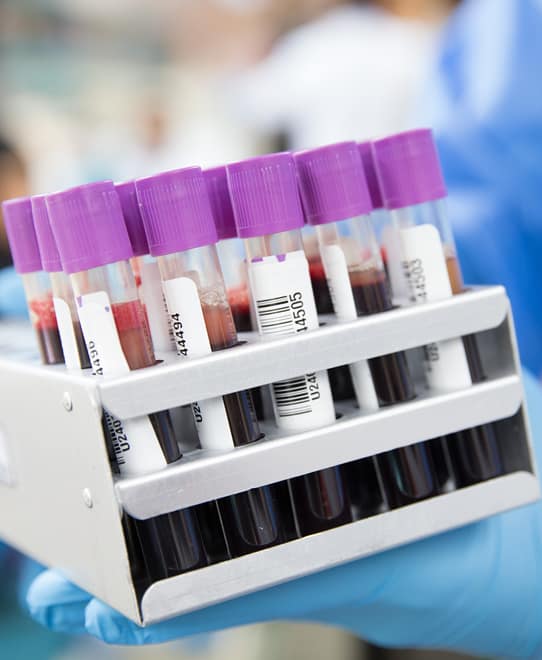Lung cancer is the most common cancer globally with ~2.5 million new cases diagnosed each year and 3.2 million people living with this cancer.
Lung cancer is often diagnosed at a late stage when the cancer has metastasised. For the 53% of patients presenting with late-stage disease, the average five-year survival rate is just 8.2%.
Earlier diagnosis of lung cancer is needed to improve patient prognosis and survival.
Key statistics
1st
the most common cancer in men and women
~2.5 million
new cases diagnosed globally each year
3.2 million
people living with lung cancer
8.9%
five-year survival rate for late-stage diagnosis*
53%
patients present with late-stage disease*
There are currently 28 peer-reviewed publications which utilise Parsortix technology in lung cancer patients from 10 independent study centres in seven countries. Recent highlights from these include:
Researchers at the National and Kapodistrian University of Athens used the Parsortix® system to isolate and harvest CTCs from 30 patients with EGFR-mutated NSCLC that were undergoing treatment with osimertinib. Both CTCs and ctDNA were analysed using a range of molecular techniques which enabled the identification of mutations, methylation, gene expression and amplification. The study provides further evidence that complementary information can be obtained through dual analysis of CTC-DNA and ctDNA. See: Comprehensive liquid biopsy analysis for monitoring NSCLC patients under second-line osimertinib treatment – PubMed
Results published by the Medical University of Vienna demonstrated that the presence of high numbers of CTCs and CTC duplets were prognostic for overall survival in the small cell lung patients samples analysed as part of the study. See: Prognostic significance of circulating tumor cells and tumor related transcripts in small cell lung cancer: A step further to clinical implementation – PubMed
A study undertaken by the Lungen Clinic Grosshansdorf, Germany, and published in the journal Molecular Oncology investigated PD-L1 status in primary tissue biopsies, cytology imprints, and CTCs from 68 NSCLC patients. The researchers concluded that the addition of CTC PDL1 analysis to histological and cytological analysis remarkably improved the positivity prediction capacity for PD-L1 positivity and high expression. Moreover, the authors state that the Parsortix system can help overcome issues of tumour heterogeneity while enabling PD-L1 assessment of patients where tissue is not available, something that is critical to helping clinicians determine patient eligibility for potential immunotherapy treatment. See: Comparative evaluation of PD‐L1 expression in cytology imprints, circulating tumour cells and tumour tissue in non‐small cell lung cancer patients – PMC
The Laboratory of Analytical Chemistry, National and Kapodistrian University of Athens, recently published research in the journal Cancers (Basel), in which the clinically actionable mutations BRAF, EGFR, KRAS, and PIK3CA, were analysed and compared in Parsortix derived-CTCs, cfDNA, and matched tissue-derived DNA from 49 early-stage NSCLC patients. Whole genome amplification and ddPCR revealed that CTCs reported a higher prevalence of clinically actionable mutations as compared to cfDNA. Overall, the researchers conclude that CTCs and cfDNA provide complementary molecular information that can impact clinical decisions and potential treatment pathways. See: Preoperative Mutational Analysis of Circulating Tumor Cells (CTCs) and Plasma-cfDNA Provides Complementary Information for Early Prediction of Relapse: A Pilot Study in Early-Stage Non-Small Cell Lung Cancer – PMC
Resources related to lung cancer

Publications
June, 2025
Novel applications of liquid Biopsy: Comprehensive methodology for circulating biomarker exploration in peripheral blood
University of Campania Luigi Vanvitelli, Naples
For Research Use Only. Not For Use In Diagnostic Procedures.
